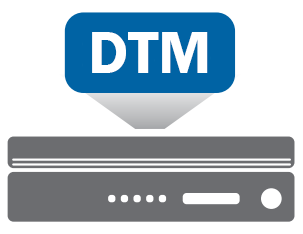Overview:
Future-proof your network
From phones to cars to refrigerators, more and more of our world is connected. Customers’ expectations for performance and reliability are also increasing. F5 BIG-IP Diameter Traffic Management can help you meet your customers’ demands—now and in the future.

Available
Advanced Diameter load balancing distributes signaling traffic across multiple servers.

Secure
Normalizes functionality and validates signal messaging to protect against roaming hacks.

Scalable
Enables comprehensive L4–L7 load balancing solutions including smart Diameter session stickiness.
Interoperability
Building a new system from the ground up is expensive and unnecessary. Our Professional Services group is on hand to help you tailor BIG-IP Diameter Traffic Management to your existing system, regardless of whether it was built on F5 technology. You’ll get a bespoke system that plays well across multiple platforms and meets the unique needs of your network.
Diameter load balancer
Smarter load balancing means a smoother ride for everyone. BIG-IP Diameter Traffic Management identifies traffic as it comes in, directing it to optimized portions of your network and improving the customer experience. It also protects your network from surge disruptions by directing and rerouting signals to available RAN towers, so you don’t have to invest in new structures to handle occasional spikes in traffic.
Control the overload
BIG-IP Diameter Traffic Management manages traffic congestion within the signaling network and protects the signaling core by:
- Prioritizing traffic by type, device, or subscriber
- Pinpointing and dealing with the specific cause for the congestion on a per-client basis
- Guaranteeing performance specifications
- Monitoring and protecting network elements with intelligent throttling that takes into account the traffic priority across groups of servers
Traffic management is only part of the story.
F5 solutions help you manage your network in a variety of ways, consolidated on a unified platform. A single system streamlines your management processes, helping your network run more efficiently.
- BIG-IP Carrier-Grade NAT (CGNAT)
Stay ahead of the transition from IPv4 to IPv6, without affecting the end-user experience.
- BIG-IP Policy Enforcement Manager
Manage your policies with a comprehensive policy charging enforcement function.
Features:
Flexibility
Provides full support for multiple Diameter use cases and is easily adjustable by using a sophisticated programmability layer.
Context Awareness
Identifies multiple Diameter nodes for more sophisticated routing policies.
Bidirectional Transformation
Implements complex business logic for connecting multiple protocols and vendors.
Load Balancing
Distributes traffic using round robin, weighted round robin, contextual, response time, least-loaded, and external policies.
Visibility
Shows how your network is running in real time for troubleshooting, analysis, and statistics on network usage.
Deployment:
Diameter Traffic Management (BIG-IP v11.4+, v12: LTM)
This F5 deployment guide provides instructions for configuring the BIG-IP system version 11.4 and later for load balancing and intelligent traffic management for the Diameter protocol. The Diameter base protocol is intended to provide an Authentication, Authorization and Accounting (AAA) framework for applications such as network access or IP mobility. Diameter is also intended to work in both local Authentication, Authorization & Accounting and roaming situations (this is an excerpt from RFC3588; for more information, see the complete RFC: http://www.ietf.org/rfc/rfc3588.txt).
The ability of the BIG-IP system to support diameter traffic management is extremely valuable. In a typical load balancing situation, there are X number of clients and Y number of servers. If all clients generate one connection, there are X connections total. The BIG-IP LTM may balance X/Y connections to each server (which may be called connection-based load balancing). However, in a Diameter environment, the number of clients is likely to be small (X may even lower than Y) and that implies low number of connections (X). Moreover, each connection is long-lived, which provides few opportunities to load balance Diameter traffic on a per-connection basis.
Multiple sessions may be established within the one transport connection. Diameter keeps transport connections (TCP/SCTP) alive and reuses them for many Diameter sessions. Each Diameter session may contain multiple messages. Diameter protocol is asynchronous, in other words, a client can send a new request without waiting for response for the previous request. The Server can send a response in any order, and it can also send a request.
In a high load environment, there is a need for per-message load balancing or message-based load balancing instead of connection-based load balancing. Imagine there is one transport connection between each client (NAS) and server (Diameter host server). The work required for a Diameter server to generate a response is significantly higher than the work required for a client to generate a request. Because of this, the Diameter server becomes a performance bottleneck for AAA requests from a single client. All requests from a particular client which are using the same transport connection are served by only one server. By supporting message-based load balancing, the BIG-IP LTM may act as a proxy that will de-multiplex each request from the client to multiple servers and improve overall performance and scalability.
The following diagram contains an example of the traffic flow for a load balanced Diameter implementation.



![]()
![]()
![]()

